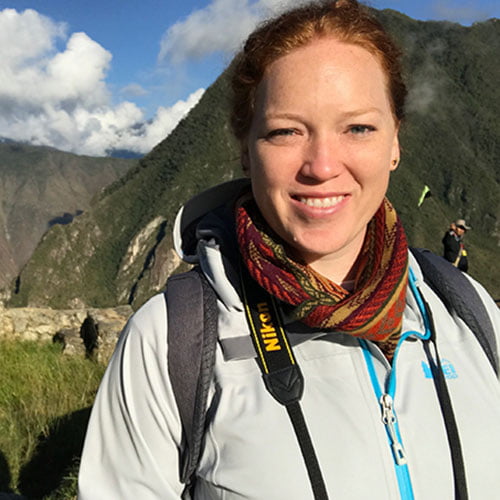 This week’s How I Educate post features Dr. Molly Estes, the Clerkship Director and Medical Education Fellowship Director at Loma Linda University. Dr. Estes spends approximately 80% of her shifts with learners which include emergency medicine residents, off-service residents, and medical students. She practices at a university hospital that is a level 1 trauma center, STEMI receiving center, and comprehensive stroke center. Below she shares with us her approach to teaching learners on shift.
This week’s How I Educate post features Dr. Molly Estes, the Clerkship Director and Medical Education Fellowship Director at Loma Linda University. Dr. Estes spends approximately 80% of her shifts with learners which include emergency medicine residents, off-service residents, and medical students. She practices at a university hospital that is a level 1 trauma center, STEMI receiving center, and comprehensive stroke center. Below she shares with us her approach to teaching learners on shift.Name 3 words that describe a teaching shift with you.
Humorous, practical, stretching.
What delivery methods do use when teaching on shift?
Mostly verbal discussion, the occasional google picture or drawing sketched on the back of my patient list.
What learning theory best describes your approach to teaching?
Socratic. I like to ask a lot of questions to first establish where the learner is at. Then I usually try to help the learner derive their own answer with a series of logical steps. I use a variety of other bedside teaching models too including the One-Minute Preceptor, SPIT, and Teaching Scripts.
What is one thing (if nothing else) that you hope to instill in those you teach?
An inquiring mind :) So much of medicine and medical reasoning is elegant and inspiring, and some of the things we can do are just downright incredible. I hope my learners are able to appreciate the depth of intricacy and sheer coolness of what we do in Emergency Medicine.
How do you balance your flow with on-shift teaching? Does this come at the expense of your documentation?
Most of my teaching is done on an individual basis, is based on the patient being presented, and with very short discussions, typically no longer than 5 minutes at a time. Occasionally if the shift permits it I will gather the learners and do a slightly longer discussion, usually around 10 minutes. This definitely causes documentation to be pushed back sometimes, but in my opinion, it’s worth it.
What is your method for reviewing learners’ notes and how do you provide feedback on documentation?
I try to review notes while on shift, but it more commonly happens after shift. If feedback is needed, I will send an Epic message to the resident or talk to them at conference that same week.
Do you feel departmental flow and metrics adversely affect teaching? What is your approach to excelling at both?
Departmental flow has been challenging to teaching, particularly as our volumes nationwide are getting higher and staffing is getting more stretched. However, teaching is necessary, and I approach it the same way I do any of the other metric requirements of my position. When you look at it as an essential action, then you make sure it gets worked in as best as possible.
It can be difficult to sit back and let senior learners struggle what is your approach to not taking over prematurely?
Literally biting my tongue. I try really hard with my senior residents to let the process happen. Sometimes it’s necessary to step in early, especially when department flow is beginning to suffer a little. But I try to pick the “safe” situations and patients that allow for a bit of the struggle so that those lessons can be applied in the broader context.
Do you start a teaching shift with certain objectives or develop them as a shift unfolds?
Depends on the day, the shift, and the resident. Sometimes we start with goals, other times we don’t.
Do you typically see patients before or after they are presented to you?
After presentations.
How do you boost morale amongst learners on shift?
Trying to rally everyone together as a team. We all need to feel like what we are doing matters, and even if it’s been a disaster of a shift, we have still made a difference to someone. I try to bring the focus back to the positives of the shift, not harping on the negatives.
How do you provide learners feedback?
Typically verbal and either on or immediately after shift. We do end-of-shift evaluations of residents, so I ensure my written feedback always matches with my verbal feedback.
What tips would you give a resident or student to excel on their shift?
Be humble, inquisitive, and challenge yourself to always learn something new from every patient.
Are there any resources you use regularly with learners to educate during a shift?
No one consistent source, but some of the sources I use are UpToDate, WikEM, Medscape, and various FOAMed resources like LITFL, EMCrit, etc.
What are your three favorite topics to teach during a shift?
Dizziness vs. lightheadedness, management of UGIB, and nearly any Heme/Onc topic (yes, I’m quite the nerd with my weird niche interests, haha).
What techniques do you employ when teaching on shift?
One-Minute Preceptor, SPIT, Teaching Scripts, and actually a modified Aunt Minnie model to teach my senior residents department flow as it relates to staffing changes.
Who are three other educators you’d like to answer these questions?
Lizveth Fierro, Andrew Little, Deena Bengiamin.

Read other How I Educate posts for more tips on how to approach on-shift teaching.
Author information
The post How I Educate Series: Molly Estes, MD appeared first on ALiEM.

